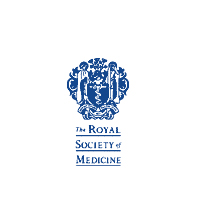Indications
Chemical face peeling with preparation containing Trichloroacetic Acid and Dermabrasion are procedures designed to produce improved appearance of the skin. Dermabrasion is more commonly employed for the removal of small scars from accidents or acne scars. Chemical peeling is more generally used to correct fine facial wrinkles and improve sun damaged skin.
Techniques
The application of the peeling solution (TCA peel, Blue Peel, Cool Peel, etc) is made to small areas such as the upper lip without need for anaesthetic, in very apprehensive patients sedation might be required. If the application is to the full face, then some painkillers taken 2 hours before the procedure alleviate most of the discomfort in combination with the application of cold air at the time of the peel. These procedures are suitable for patients in the setting of our treatment rooms, or can be used as an additional procedure during facial rejuvenation surgery.
The chemical peels are often not a single treatment but just part of a skin care program. We use different combinations of special creams to suit your needs (Retinoic acid creams, BioMedic® formulations, Obagi Nuderm® and others). It is important not to interfere with skin regeneration and to keep the skin well moisturized. Light application of Vaseline ointment or face cream at night will help to lubricate the new skin.
Chemabrasion
This is a modification of the technique so far applied and is often used by me for crease lines around the upper and lower lips. This consists of chemical peel followed immediately by superficial dermabrasion which removes the top layer of skin. When this is done it is not necessary to put on an adhesive dressing, and instead you would only require saline compresses for the first hour or two, after which Vaseline is applied three times daily. This technique works well and has the advantage of being a simpler routine, and also the skin remains much less unsightly and appears to heal more rapidly.
For the first two weeks the skin appears pink, after which make-up can be used, and the skin gradually fades to normal colour. For the first 3-6 months the skin is more delicate, and strong sunlight is better avoided, which might otherwise result in abnormal pigmentation of the skin.
Possible Complications
These are extremely low provided care and common sense are used. Very occasionally skin in an individual will take as long as 3-4 months to fade to normal colour. Small “white heads” or “milia” may form in the early weeks but will clear with application of ointment.
Excessive or uneven pigmentation of the skin can occur if the face is exposed to sunlight too early.
Please inform me if you have history or a tendency for viral infection such as Herpes (cold sores included) as prophylactic medication can be prescribed before treatment to reduce the chances of reactivation of the viral infection.
Those whose complexion is dark are less suitable for treatment, and your suitability will have to be assessed to minimise complications. Scarring or skin colour changes such as lightening of the skin are possible but very rare with attention to detail.
The long-term effect of the treatment is found to be excellent, but can be repeated if ever found to be necessary.
I hope that this information, and the attention that you will receive postoperatively will keep you fully informed. During consultation additional details regarding the procedure in general and also related to your specific needs will be discussed.
In order to ensure a personal and confidential programme of aftercare always feel free to contact a member of my team. I can be contacted through my secretary should the need arise.









